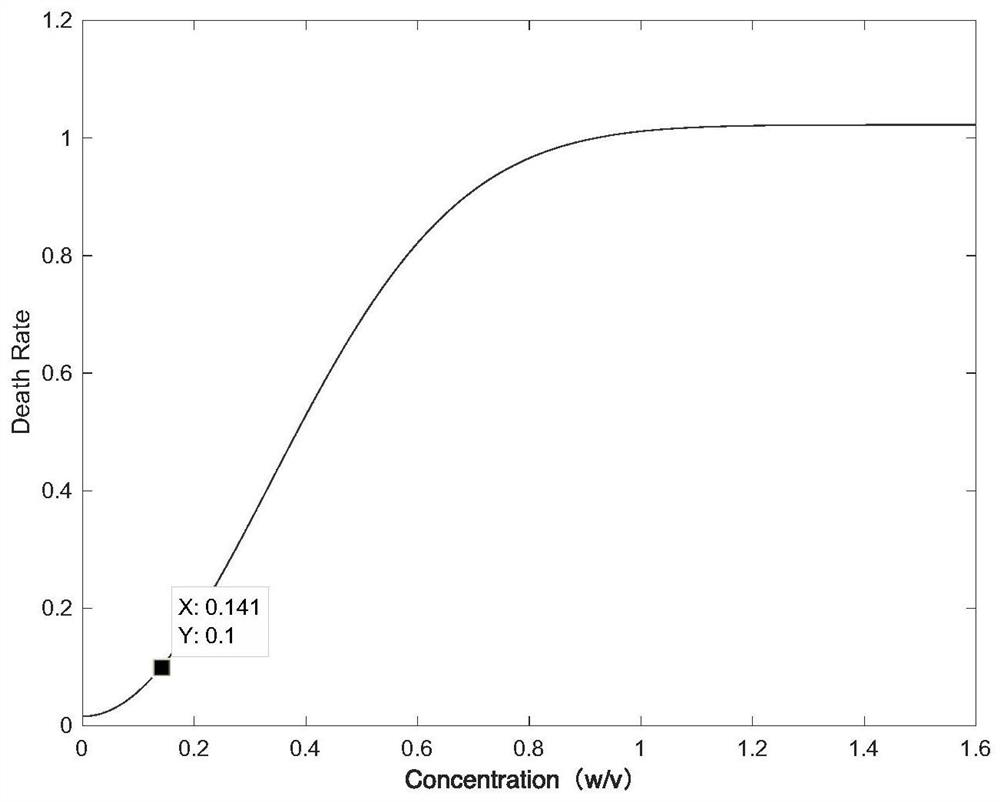Method for evaluating safety of vegetables and fruits by using zebra fish
A technology for vegetables, fruits, and zebrafish, which is applied to testing food, measuring devices, instruments, etc., can solve problems such as unknown physical and chemical properties, uncertainty, and difficulty in detection, and achieve scientific and reasonable detection methods, high detection accuracy, and high detection accuracy. The effect of detection cost reduction
- Summary
- Abstract
- Description
- Claims
- Application Information
AI Technical Summary
Problems solved by technology
Method used
Image
Examples
Embodiment 1
[0047] The investigation of embodiment 1 pretreatment method
[0048] In this example, comparing the chemical extraction method, enzymatic hydrolysis method, and enzymatic hydrolysis-chemical extraction method, it is found that the enzymatic hydrolysis method can degrade cellulose and carbohydrates. Since cellulose and sugar have a great impact on the living environment of zebrafish, they are The experimental results caused large deviations, so it is necessary to degrade cellulose and sugar. The enzymatic hydrolysis method can retain the original substances in the food to the greatest extent and minimize the loss. However, the chemical extraction method cannot remove polysaccharides, which has a great impact on the experimental environment of zebrafish; it also cannot destroy the tissue structure of vegetables and fruit plants, and effectively extract the toxic substances contained in plants.
[0049] The enzymatic hydrolysis-chemical extraction method can concentrate the sam...
Embodiment 2
[0056] The investigation of embodiment 2 extraction solvent
[0057] Comparing the extraction rates of methanol, acetonitrile, DMSO, acetone and tetrahydrofuran, and their pairwise mixtures on vegetable and fruit fats at a concentration of 10%-100%, using self-made positive samples with known residues for extraction rate analysis, the positive additives are mainly solvents Residues, pollutants, food additives and heavy metal salts, the comparison results show that the extraction rate of acetonitrile: acetone: water is 1.5: 1: 1 and the extraction rate is the best, and the extraction rate of various substances can reach 70%-85%. The extract was dried by drying at 55°C and nitrogen blowing at 55°C. After drying, the optimal constant volume solution is 70% methanol, and the considerations are the toxicity of the organic solvent to the zebrafish and the solubility of the organic solvent aqueous solution to the extract. The experimental results are shown in Table 2.
[0058] Tabl...
Embodiment 3
[0061] Embodiment 3 Zebrafish toxicity evaluation test
[0062] (1) Acute toxicity effect
[0063] The 4-128 cell stage zebrafish is selected as the living test body, and the embryonic fish sample extract is contacted. According to the stability of the test substance, a static or semi-static system is used for the test. The judgment indicators are embryo coagulation and failure to develop somites. Lack of heartbeat and tail not separated from yolk sac, these end points are used as the markers for judging the death of zebrafish, and can be recorded and observed at 24h and 48h, and used to calculate the half lethal concentration LC50 value and NOAEL value of the sample extract. 24h and 48h are the appropriate observation time selected, and the considerations are the timeliness and accuracy of the zebrafish experiment.
[0064] After 72 hours, the influence of the growth environment of zebrafish on it began to increase. In addition, the toxic effect and the 48h-72h period, the t...
PUM
 Login to View More
Login to View More Abstract
Description
Claims
Application Information
 Login to View More
Login to View More - R&D
- Intellectual Property
- Life Sciences
- Materials
- Tech Scout
- Unparalleled Data Quality
- Higher Quality Content
- 60% Fewer Hallucinations
Browse by: Latest US Patents, China's latest patents, Technical Efficacy Thesaurus, Application Domain, Technology Topic, Popular Technical Reports.
© 2025 PatSnap. All rights reserved.Legal|Privacy policy|Modern Slavery Act Transparency Statement|Sitemap|About US| Contact US: help@patsnap.com



